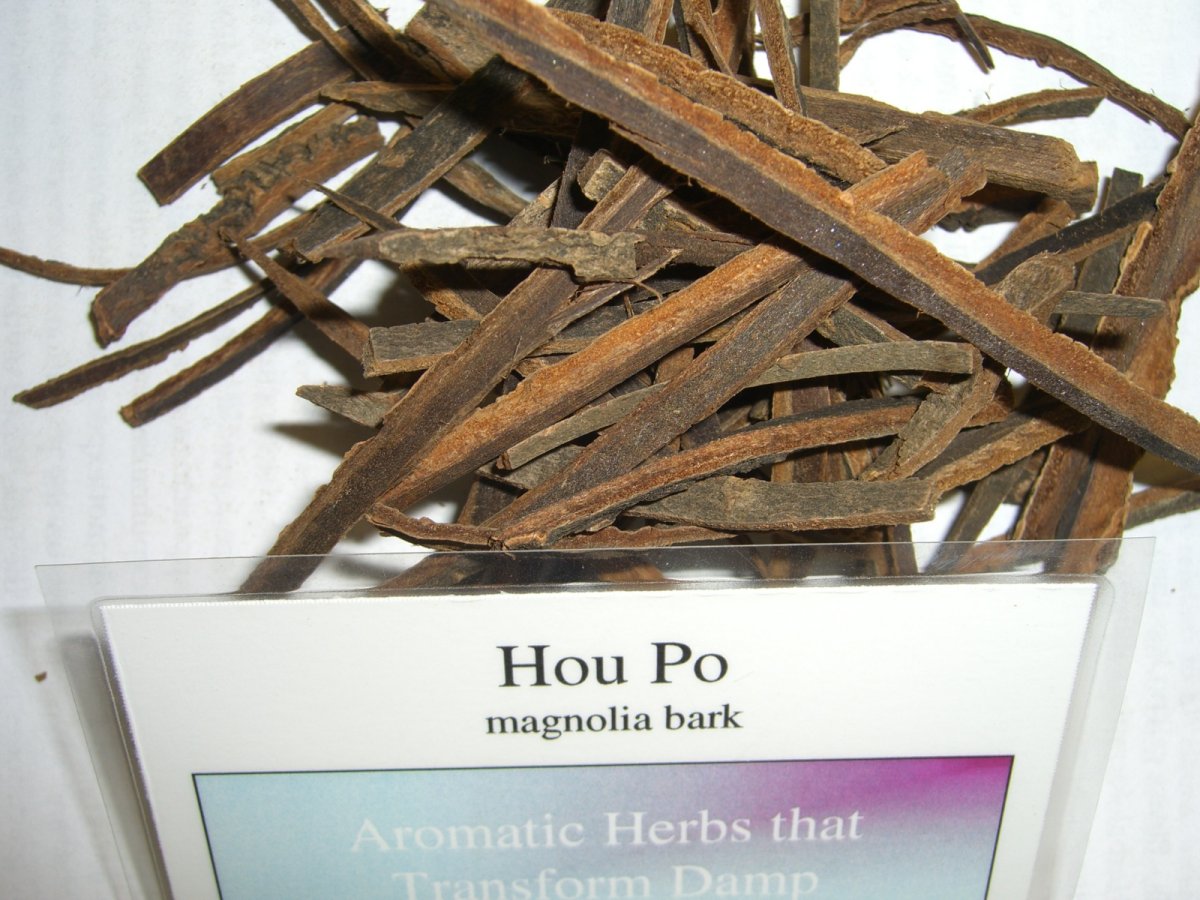Hou Po

  | Hou Po in TCM:Explore the properties of Hou Po according to Chinese
Nutrition and Traditional Chinese Medicine (TCM):
Factoids:
English Name: magnolia bark
Pharmacuetical Name: cortex magnoliae officinalis
Properties: bitter, acrid, warm, aromatic
Temperature: warm
Channels: LU, LI, ST, SP
Flavors: aromatic, bitter, pungent
Special Properties:
circulates qi, clears damp, resolves phlegm, resolves food stagnation
Actions / Indications:
- Dries Dampness; Promotes Qi movement; Resolves Stagnation
(distress of SP and ST due to dampness and/or qi stagnation; damp-warm
febrile diseases; food stagnation; distension and fullness of chest
and abdomen; appetite loss; diarrhea)
- Transforms Phlegm; Descends LU qi (wheezing due to
phlegm obstructionwith cough; stifling chest sensation)
Special Notes:
- Quite strong in its qi regulating function, some describe Hou Po as "breaking open the qi". When used improperly this herb can damage yuan qi - use with special caution in deficient patients with bloating.
Contraindications:
- (cc: pregnancy)
- (cc: yin deficiency)
Disclaimer: In accordance with our terms of service, by using this web site you agree that none of the information found on this web site constitutes medical advice. You should always consult your doctor before trying any particular food or herbal remedy to treat disease.
Folk remedies presented on this site are designed to address specifc TCM diagnoses, and are not one-size-fits-all. If you would like to learn more about Traditional Chinese Medicine (TCM) and how it relates to Chinese Nutrition, you can book in a free call with a licensed professional. There is no obligation to purchase.
[CLICK HERE for your free INITIAL CONSULTATION] |

